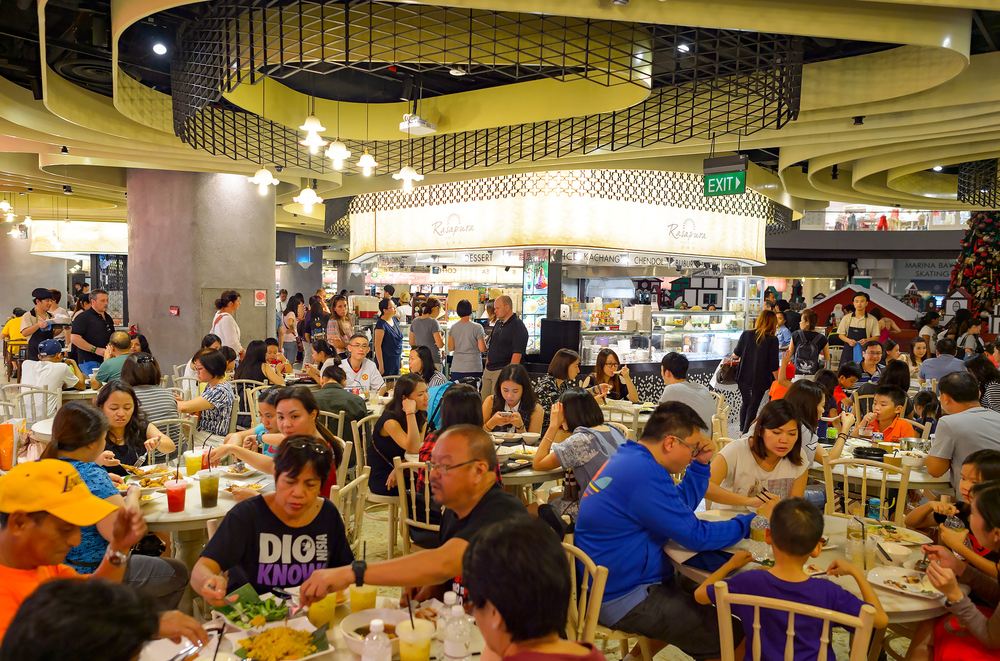
Singapore’s halal food industry growing from strength to strength
Photo: SINGAPORE - NOVEMBER 7, 2015: A food court in Singapore. Typically, at least one stall at food courts such as this one will serve halal-certified food / Sorbis / Shutterstock.com
Less than 2 percent of Singapore's land is available for agriculture, but the small city state has an ideal location and has turned itself into a halal food production and ingredients hub by focusing on international best practices and certification. With a five-fold increase in the number of halal-certified companies since 2000, what opportunities are there for new players to enter Singapore’s halal food industry?
| YOUR PAIN POINTS ADDRESSED | ASK YOURSELF | |
Scenario: You are considering launching a halal food brand in Singapore. |
How attractive is Singapore’s halal food market? |
What are the domestic drivers of Singapore’s halal food industry? |
| How has the halal food landscape evolved to respond to increasing demand? | ||
| What are the export opportunities for Singapore? | ||
POSITIVE DEMAND DRIVERS FOR DOMESTIC MARKET
Singapore's geography makes the country an ideal hub for halal food production, trading and re-export. The island nation is able to capitalize on its proximity to Muslim-majority Malaysia and Indonesia, supported by a highly developed logistics infrastructure for global trade. With just 1.47 percent of land turned over to agriculture, Singapore is highly import dependent, with food imports estimated at $8.4 billion in 2014, according to the country’s Statistics Department. Of that figure, an estimated 75 percent is re-exported to neighboring countries.
The city state's cosmopolitan make-up, with a large expatriate workforce and 15 percent of the 5.5 million population Muslim, has driven demand for halal food. Further, Singapore has the highest per capita food consumption in Southeast Asia, estimated at $997 in 2015 by Business Monitor International.
“It is easy to produce and sell halal-certified products in Singapore as they can be consumed by almost everyone. In other words, non-certified products can reach 85 percent of the local population whereas halal-certified products can be an option for the whole populace,” Shahlan Hairalah, Principal of Halal Management Solutions and CEO of Sahl International, a halal markets advisory firm in Singapore, told Salaam Gateway.
Tourism has also played a part in driving demand for halal-certified restaurants, cafes and fast food outlets, with the country receiving 15.2 million tourists in 2015, bolstered by 2.73 million visitors coming from Indonesia, and 1.17 million from Malaysia, according to the Singapore Tourism Board. Indeed, Singapore was voted the most “friendly” non-Muslim destination for Muslim tourists in 2015 in CrescentRating's Global Muslim Travel Index (GMTI).
That said, halal tourism is still considered to be in its infancy, with only a few hotels offering prayer facilities and halal-certified food. “To bolster this segment of the tourism industry, more hotels, malls, restaurants, food stalls and tour agencies must make a conscious move to meet the demands of Muslim tourists,” said Hairalah.
Photo: SINGAPORE, OCT 2015 - Exterior of a McDonald's restaurant near Lavendar MRT Station in Singapore. McDonald's in Singapore is MUIS halal-certified / Trong Nguyen / Shutterstock.com
RAPID GROWTH IN CERTIFICATION TO MEET DEMAND
Certification has risen five-fold over the past 15 years, from 533 in 2000, to 2,941 in 2014, according to the country's certification authority, Majlis Ugama Islam Singapura (Islamic Religious Council of Singapore, known as Muis). Certification revenue has also risen, from $2.2 million in 2013, to $2.9 million in 2014, according to Muis.
Indicative of demand at the local and regional level for halal certification, Singapore currently has over 10 active halal consultancy firms, according to Fazil Marican, founder of Singapore-based consultancy firm SimplyHalal.
“Halal certification has grown in parallel with demand for halal food in the country,” said Marican to Salaam Gateway. “Demand has been further boosted by the socially multicultural environment, where families and friends dine in halal restaurants with Muslim acquaintances.”
Although Singapore can never be a food producer due to the lack of arable land, the country's food processing facilities are considered to be of a high international standard, while halal food products are highly diverse, in line with the country's cosmopolitan populace. “Singapore generally produces halal food that caters to diverse cuisines, from Asian to Western and Middle Eastern. Most of these are finished food products that are ready to be sold at retail stores (local and overseas) and served in restaurants,” said Marican.
Products range from Asian delicacies such as sauces, marinades, soups, and noodles to micro-ground coffees, instant noodles, French breads, cheeses, oils and chocolates, according to Hairalah.
Demand for healthy and organic foods is a further area of growth in which halal producers are tapping into. “Producers are extending their offerings toward organic, natural and healthy options to appeal to a wider market segment as raw materials can be sourced globally,” said Marican.
STRONG EXPORT POTENTIAL WITH IMPORTANT CAVEATS
Singapore exported $79 million in meat and live animals to Organisation of Islamic Cooperation (OIC) markets in 2015, primarily to Indonesia ($52 million) and Malaysia ($24 milion), according to ITC Trade map data. The country is poised to grow exports to the United Arab Emirates following trade agreements between the two countries.
Some local brands that have gone global include Pokka (instant noodles), Tee Yih Jia (spring roll skin), Super International (instant coffee) and Seng Hua Hng Foodstuff (the Camel brand of nuts and dried fruits).
But while Singapore has a strong export advantage through producing value-added halal ingredients and finished products such as flavorings, colorings and processed foods, the sector is being hobbled by scalability.
“Scaling up requires higher levels of productivity and innovation. With volume production, Singapore-made products can be marketed and sold globally but most producers are finding out that scaling up is more challenging than starting-up. Many are grappling with the high expense of human resources, intensive production and automation,” said Hairalah.
Additionally, for producers to compete at the regional and global level, they will have to go head-to-head with larger companies with access to farmlands and better economies of scale in neighboring Indonesia, Malaysia, and Thailand.
“Manufacturers are in dilemma. Many produce domestically-focused products such as noodles, tofu, and Asian-inspired pre-mixes but they have to compete with bigger regional companies. And if they choose to produce new product ranges such as frozen bread dough, pastes and sauces, they will be forced to compete with giant global companies that specialize in such products,” added Hairalah.
|
SUGGESTED ROADPMAP |
|
Seek certification domestically |
|
Understand the produce needs of your target customer group and determined underserved product segments |
|
Market your products internationally |
© SalaamGateway.com 2016


Paul Cochrane, Senior Associate, DinarStandard